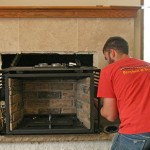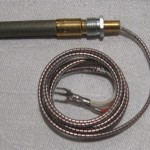Cost of Gas Insert Fireplace: A Comprehensive Guide
Gas insert fireplaces have become increasingly popular as a convenient and aesthetically pleasing heating option for homes. They offer the ambiance of a traditional fireplace without the mess and inefficiency of burning wood. However, before investing in a gas insert, it is crucial to understand the various factors that contribute to the overall cost. This article provides a comprehensive overview of the expenses associated with gas insert fireplaces, helping homeowners make informed decisions.
The total cost of a gas insert fireplace encompasses several components, including the unit itself, installation, venting, and ongoing maintenance. Each of these aspects can vary significantly depending on the model, the complexity of the installation, and local labor rates. Therefore, a detailed examination of each cost factor is essential.
Understanding the Initial Cost of the Gas Insert Unit
The gas insert unit represents the most significant upfront expense. The price of a gas insert can range widely, typically from $2,000 to $5,000 or more. This variation is driven by several factors, including the unit's size, heating capacity (measured in BTUs), features, and brand.
Smaller gas inserts, suitable for heating a small room or providing supplemental heat, tend to be at the lower end of the price range. Larger units with higher BTU ratings, designed to heat larger spaces or even entire homes, will naturally cost more. Features such as remote controls, programmable thermostats, decorative logs, and realistic flame displays also contribute to higher prices.
Brand reputation and quality play a significant role as well. Well-established brands with a history of reliability and innovation often command higher prices than lesser-known brands. While a lower-priced unit may seem appealing, it is critical to consider the long-term value and potential cost savings associated with a more efficient and durable model. It's advisable to research different brands and read reviews to understand their performance and customer satisfaction.
The aesthetic design of the gas insert also impacts its price. Models with elaborate firebox designs, realistic log sets, and customizable flame patterns will typically be more expensive. Homeowners should consider their aesthetic preferences and budget when selecting a unit. It's not always necessary to opt for the most expensive model to achieve a beautiful and functional fireplace.
Another factor affecting initial cost is the type of gas insert, specifically whether it is a natural gas or propane model. While the fundamental function is the same, the internal components and fuel delivery systems are specifically designed for each fuel type. The price difference between natural gas and propane inserts is typically minimal, but availability and installation costs associated with each fuel source can vary.
Analyzing Installation and Venting Costs
Installation costs represent a significant portion of the overall expense and are often underestimated. Installation involves several steps, including preparing the existing fireplace opening, connecting the gas line, installing the venting system, and testing the unit for proper operation. The complexity of the installation will directly impact the labor costs associated with the project.
Simple installations, where the gas line is readily accessible and the existing chimney is in good condition, will typically be less expensive. However, if the gas line needs to be extended, or if the chimney requires repairs or relining, the installation costs can increase substantially. Chimney relining involves installing a new liner inside the existing chimney to ensure proper venting and safety. This is often necessary for older chimneys that have deteriorated over time.
Venting options for gas inserts include direct vent, B-vent, and vent-free. Direct vent systems are the most common and safest, as they draw combustion air from outside and exhaust directly outside. B-vent systems use the existing chimney to vent exhaust gases, while vent-free systems do not require venting at all. Vent-free systems are generally less expensive to install but may not be suitable for all homes due to concerns about indoor air quality and moisture buildup. Building codes often regulate the permissible use of vent-free appliances.
Obtaining multiple quotes from qualified and licensed installers is crucial to ensure a fair price and proper installation. It is important to verify the installer's credentials, insurance, and experience with gas insert fireplaces. A reputable installer will conduct a thorough inspection of the existing fireplace and chimney to assess the installation requirements and provide an accurate estimate. The estimate should clearly outline all costs, including labor, materials, permits (if required), and any contingency fees for unforeseen issues.
Permits are sometimes required for gas insert installations, depending on local building codes. These permits add to the overall cost, but they are essential for ensuring that the installation meets safety standards and complies with local regulations. The installer should be familiar with local permit requirements and can assist with the application process.
Assessing Ongoing Operational and Maintenance Costs
Beyond the initial purchase and installation, gas insert fireplaces incur ongoing operational and maintenance costs. These expenses include fuel costs (natural gas or propane) and periodic maintenance to ensure optimal performance and safety.
Fuel costs will vary depending on the local gas or propane rates, the efficiency of the gas insert, and the frequency of use. More efficient gas inserts consume less fuel, resulting in lower operating costs. The energy efficiency of a gas insert is typically measured by its Annual Fuel Utilization Efficiency (AFUE) rating. A higher AFUE rating indicates greater efficiency. Homeowners can estimate their fuel costs by considering their local fuel rates, the BTU rating of the gas insert, and the number of hours they plan to use it. Online calculators are often available to assist with this estimation.
Regular maintenance is crucial for ensuring the longevity and safe operation of the gas insert. Annual maintenance typically involves cleaning the burner assembly, inspecting the venting system, checking the gas connections, and testing the pilot light or ignition system. It is recommended to hire a qualified technician to perform these maintenance tasks. The cost of annual maintenance can range from $100 to $300, depending on the extent of the service and local labor rates.
In addition to annual maintenance, homeowners should also perform basic cleaning and maintenance tasks themselves. This includes cleaning the glass front of the fireplace with a gas fireplace-specific cleaner, removing any debris or lint from the burner area, and visually inspecting the venting system for any signs of damage or blockage. Following the manufacturer's recommendations for cleaning and maintenance is essential.
Over time, certain components of the gas insert may need to be replaced, such as the igniter, gas valve, or thermostat. These replacement parts can add to the maintenance costs, but they are necessary to ensure the continued safe and efficient operation of the fireplace. The cost of replacement parts will vary depending on the model and the specific component that needs to be replaced. Warranties can often cover some of the cost of parts replacement within a specific time frame.
Homeowners should also consider the cost of potential repairs if the gas insert malfunctions. While gas inserts are generally reliable, they can occasionally experience problems such as ignition issues, gas leaks, or venting problems. Addressing these issues promptly is crucial to prevent safety hazards and further damage. The cost of repairs will depend on the nature of the problem and the labor rates of the repair technician.
Finally, it is important to factor in the cost of insurance coverage for the gas insert fireplace. Homeowners insurance policies typically cover damage caused by fire or other covered perils, but it is important to verify that the policy provides adequate coverage for the gas insert and related components. In some cases, it may be necessary to increase the policy limits or add a rider to ensure sufficient coverage.

How Much Does A Gas Fireplace Cost Fireplaces Direct Learning Center

How Much Does A Gas Fireplace Cost Fireplaces Direct Learning Center

Gas Fireplace Cost Guide Unit Add Ons Installation More

Estimated Page Fireplaces Stoves Inserts Wood Gas Pellet

Gas Fireplace Insert Cost Forbes Home

Gas Fireplace Insert Propane Regency Vermont Castings Napoleon

Gas Fireplace Inserts Pros And Cons Of Ventless Fireplaces

Fireplace Inserts Nw Natural Appliance Center

A Step By Guide To Understanding Fireplace Inserts

2024 Gas Fireplace Insert Costs








